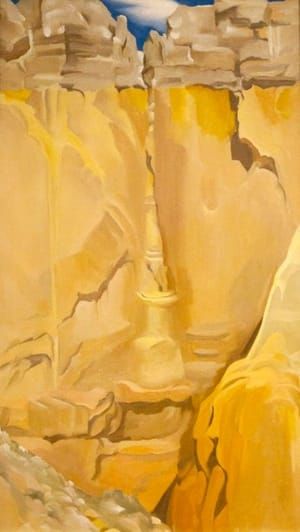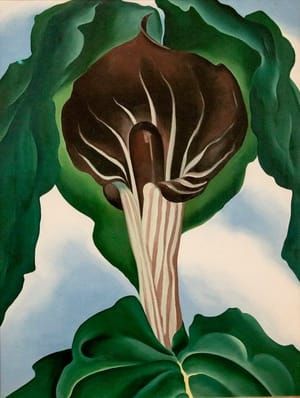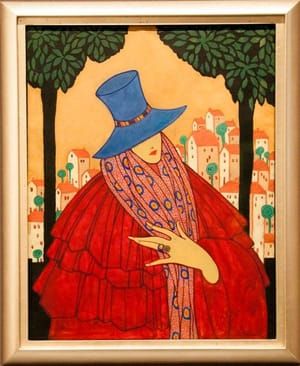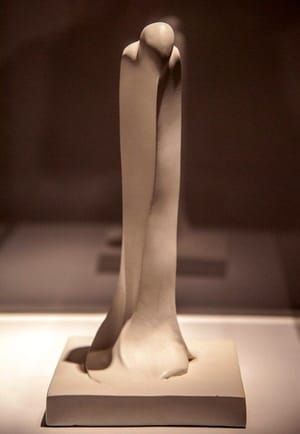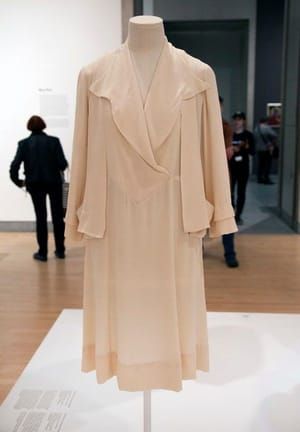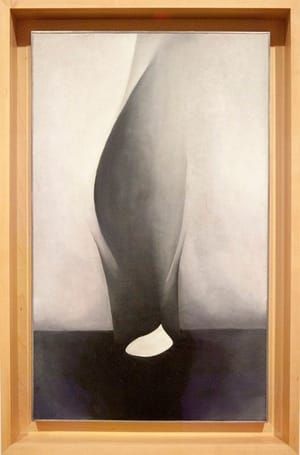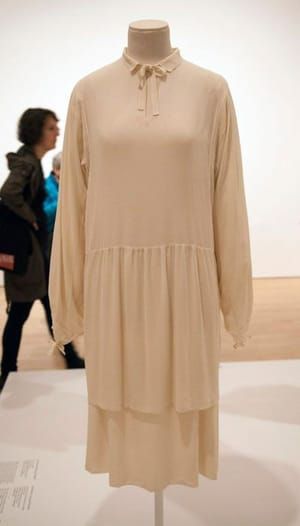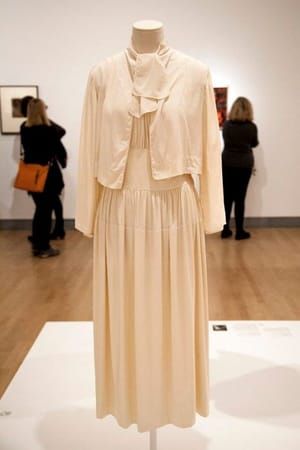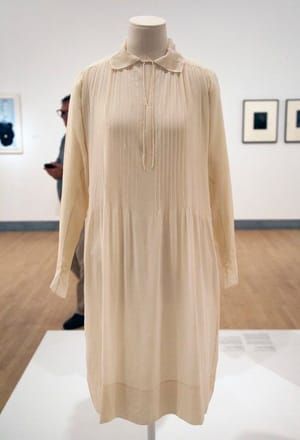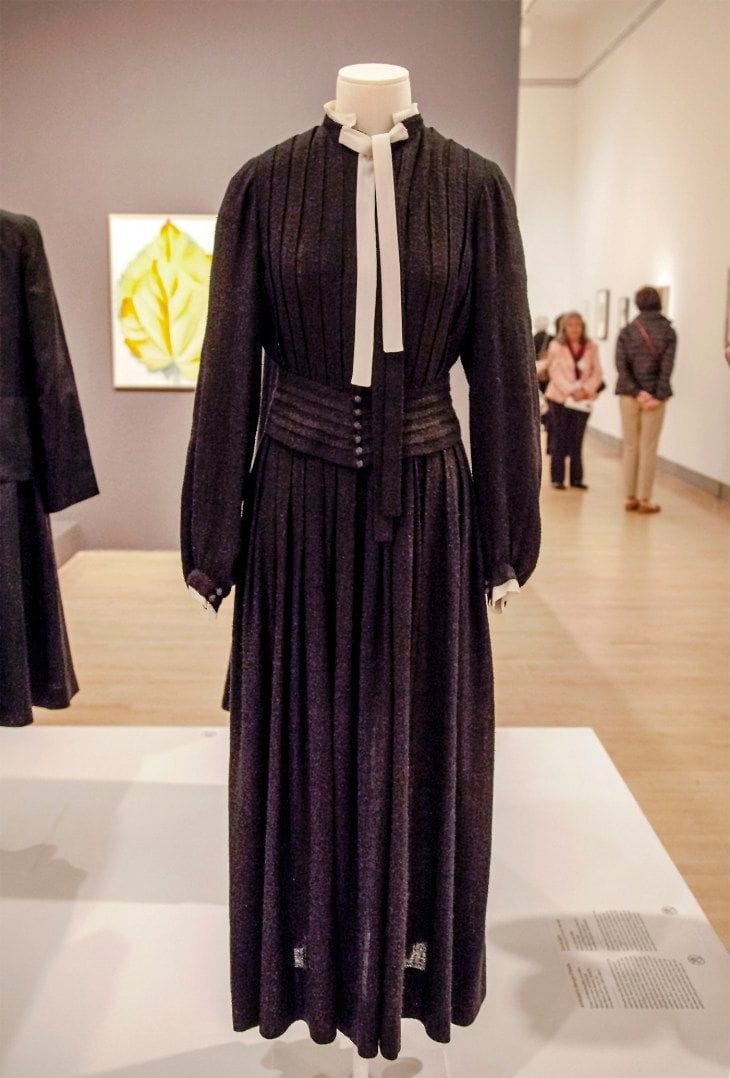

Dress with Matching Belt, 1930
Georgia O'Keeffe
Attributed to Georgia O'Keeffe
Dress with Matching Belt, circa 1930s
Black wool crepe, and white silk
Georgia O’Keeffe Museum, Santa Fe, New Mexico; Gift of Juan and Anna Marie Hamilton, 2000.3.355a-b
O’Keeffe wore this black pleated dress with its matching cummerbund and loose “peasant” sleeves for many public occasions. Its design features a row of continuous vertical pleats, like the fluting of a column, that begin at the shoulder and end at the hemline. The pleats function much as the pintucks do in her blouses: as understated “stripes” that both shape and decorate the dress. O’Keeffe fashioned the dress so that it simulated a layered look, giving the neckline not one but two standup collars; a white silk one sewn inside the black wool one. Both collars have long ties that she would tie, tuck, or let flow loosely down her torso. Sewing white wristbands in the cuffs of the sleeves reinforced the illusion that she was wearing a white garment under a black one.
O’Keeffe was an accomplished seamstress and made her own clothes early in her life. Because of their fine details and high-quality construction, it seems reasonable to assume that she made the group of silk ensembles on view here. She kept, stored, and moved these early garments from one home to the next for over half a century, preserving them most likely because they carried memories not only of her first years with Stieglitz but also of her considerable labors and artistry in crafting them.
...Though she dressed for personal comfort and ease, Gerogia O'Keeffe's wardrobe played a meaningful role in her aesthetic universe; she understood how clothes helped create and reinforce her image as an independent woman and artist.
Rejecting the staid Victorian world into which she was born, O’Keeffe absorbed the progressive principles of the Arts and Crafts Movement, which promoted the idea that everything a person made or chose to live with—art, clothing, home decor—should reflect a unified and visually pleasing aesthetic. Even the smallest acts of daily life, she like to say, should be done beautifully, a philosophy reinforced by her study and appreciation for the arts and cultures of Japan and China.
O’Keeffe applied these principles to her lifestyle comprehensively. The elemental, abstracted forms and serial investigations that characterized her art were also evident in her clothing. Whether hand sewn by her, custom made, or bought off the rack, her garments and the way she styled them emphasized her preference for compact shapes, simple lines, organic silhouettes, and minimal ornamentation….
The many photographic portraits made of O’Keeffe over the course of her life narrate the evolution of a strikingly coherent personal style. They reveal how carefully she dressed and posed for the camera, and how the photographic gaze so often bore witness to the deliberate alliance between the artist’s attire, her art, and her homes. For O’Keeffe, photography played an essential role in shaping and promoting her public identity and helped establish her present-day status—enduring, but to her, unintentional—as an icon of feminism and fashion.
(https://designlifenetwork.com/georgia-okeeffe-living-modern-virtual-tour/)
© 1930 Georgia O'Keeffe
Georgia O'Keeffe
artistArthur
coming soon

